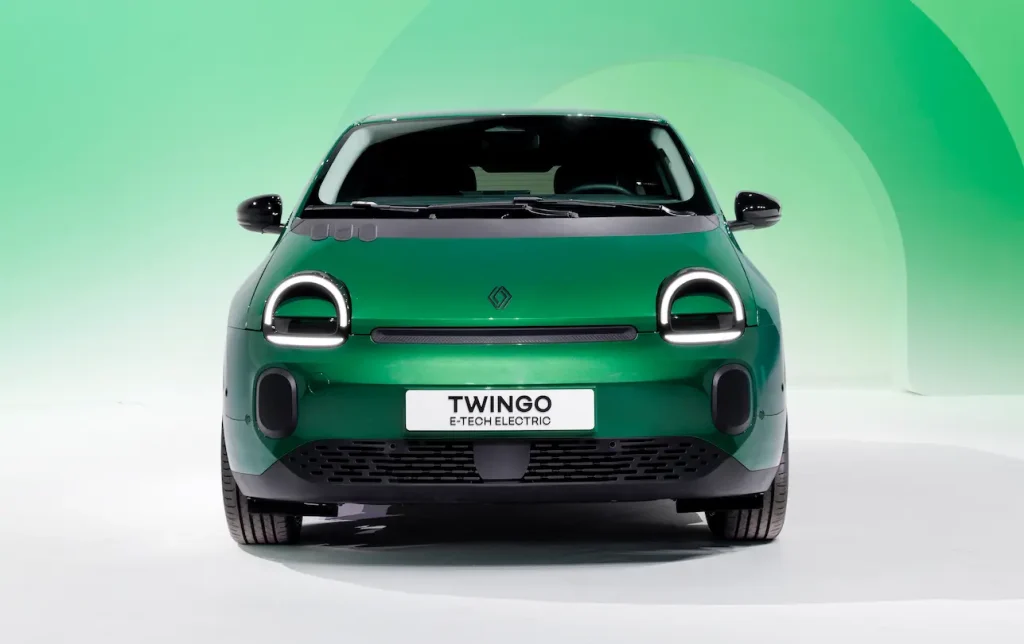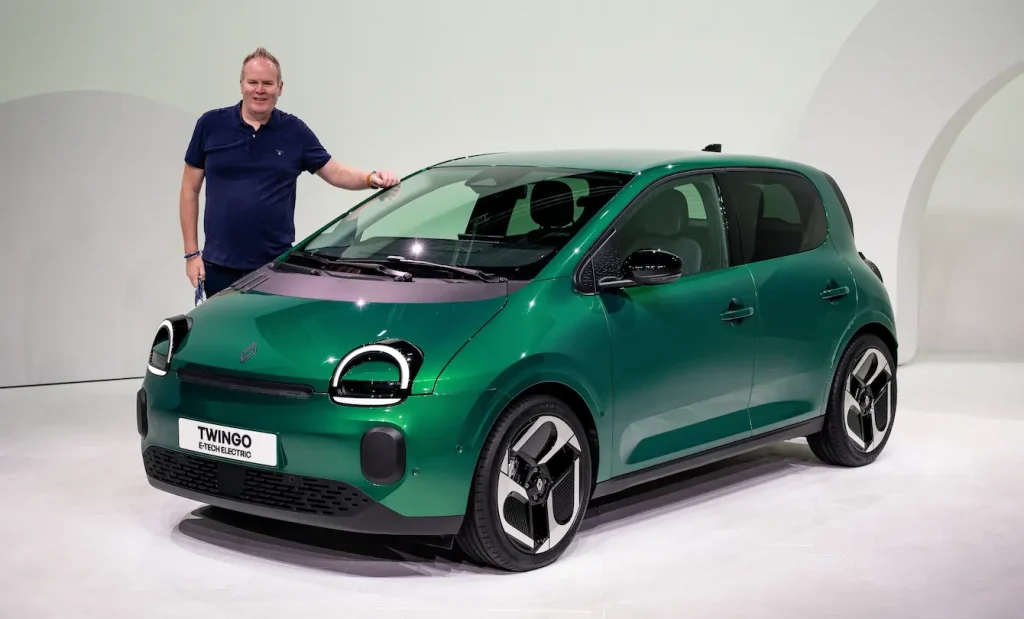
Exterior
Think of the Renault Twingo, and you’ll probably be thinking of the second- and third-generation cars that were sold in the UK. Sadly, not the iconic first-generation car, launched back in 1992, which the UK was denied. That car caused a sensation, thanks to its radical styling, plus a spacious and funky interior. Now, like our current Business Car of The Year, the Renault 5 E-Tech, and more recently, the Renault 4 E-Tech, the first-generation Twingo has received a retro modern reboot to take on other electric city car rivals. In the metal, like the R5 and R4 before it, the Twingo E-Tech has real ‘want’ factor. From its smiley ‘front face’, which is defined by the curved running lights and its lower indicator units, that neatly hide the small headlights and echo the design of the original headlights, with the curved front grille creating the smile below. The shape might be similar, but it’s compact (3.79m in length and an extended 2.49m wheelbase), and much curvier – particularly around the rear quarters, and the pop-out rear windows. The lack of window rubbers sharpens the design, too. This is in contrast to the back that’s dominated by the large TV-like rear window – a feature that’s also carried over from the original and finished in contrasting black trim. Like the front, the rear of the Twingo has distinctive curved rear light clusters, with neat little fins on the top for aerodynamics.

Interior
Inside, the tall and vertically designed dashboard is like the R5 and R4. Highlights include the colour-coded panels on the door and dashboard panels on the range-topping Techno equipment grade, the distinctive air vents, the over-sized warning light button, and the 7in driver display, plus the central 10in infotainment screen. The plastics are hard, with much made from Starkle, the sparkly, recycled interior material first seen in the Dacia Duster. Attractive design features, such as the alphabet etched into the roof lining, draw eyes away from the trim materials. Overall cabin space feels like a segment above, with 160mm of rear kneeroom, and 1,305mm shoulder width in the back. Where the Twingo gets clever is the fact that the two independent rear seats can slide independently by up to 17cm, equalling more legroom, or boot space up to 360 litres. Another clever Twingo interior feature is the three YouClip anchor points, to which accessories, such as a UDB cable reel, and a rear parcel shelf can be clipped into.

Discover B2B Marketing That Performs
Combine business intelligence and editorial excellence to reach engaged professionals across 36 leading media platforms.

Powertrains
The Twingo is built on the same Amp-R small car platform as the R5 and R4 before it, although to save money it gets the rear axle from the ICE powered Captur. For the first time in a Renault, the Twingo gets a 27.5kWh LFP (Lithium Iron Sulphate), cell-to-pack battery. This powers a 60kW eMotor, equalling 82hp, 175Nm of torque, and a 12.1 second 0-62mph acceleration time. As a result, the Twingo has a modest 168-mile range. It can charge at up to 50kW, with a 10 to 80% charge possible in 30 minutes, plus V2L capability powering 220V appliances at up to 3.7kW.
Technology
The range-topping Techno grade’s central 10in infotainment screen runs the familiar OpenR Link multimedia, and Google built-in with Google Assistant, Google Maps, EV route planner, and over 100 apps from the Google Play catalogue, plus Reno, the virtual avatar, ready to help and advise.

Equipment
Two equipment grades – Evolution and Techno – are expected to launch in the UK in early 2027. Like the Clio before it, the reason for the long lead time is left-hand production priority – which is a shame, but we think the Twingo will be worth the wait. Exact kit levels have yet to be confirmed but standard Twingo equipment is expected to include 16in wheel covers, a 7in digital driver display, a 10in central multimedia display, and smartphone replication with Android Auto/Apple Carplay. There are individually sliding rear seats, a height-adjustable driver seat, manual climate control, cruise control, automatic parking brake, rear parking sensors, automatic emergency braking, lane keeping assist, advanced driver monitoring system, and a mode 3 charging cable.
Safety
Like the R5 and R4 before it, the Twingo has 24 driving aids, many taken from upper segments, including rear cross traffic alert, hands-free parking, and occupant safe exit alert.

US Tariffs are shifting - will you react or anticipate?
Don’t let policy changes catch you off guard. Stay proactive with real-time data and expert analysis.
By GlobalData
Costs
Available now for just £100, the Twingo R Pass offers UK customers priority ordering, a dedicated concierge service, early access to information and exclusive gifts. Prices will start at under £20,000 according to a Renault source, and the range-topping Techno grade is expected to be the most popular with fleets.
Martyn Collins
Editor, Business Car





